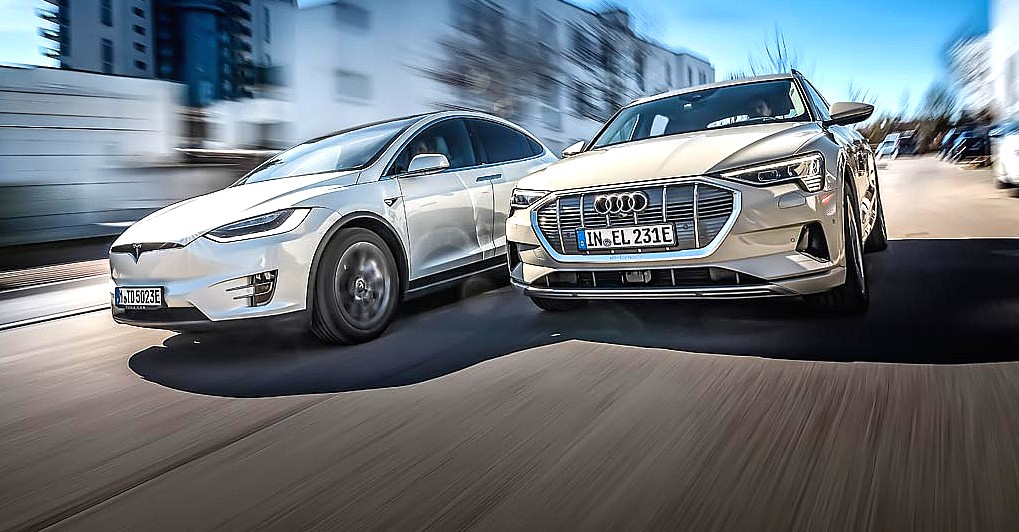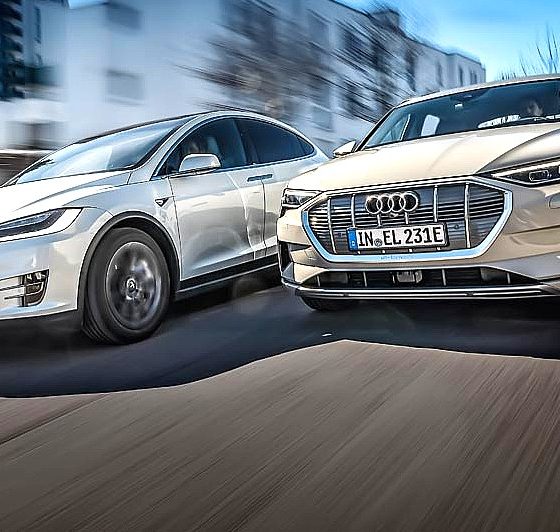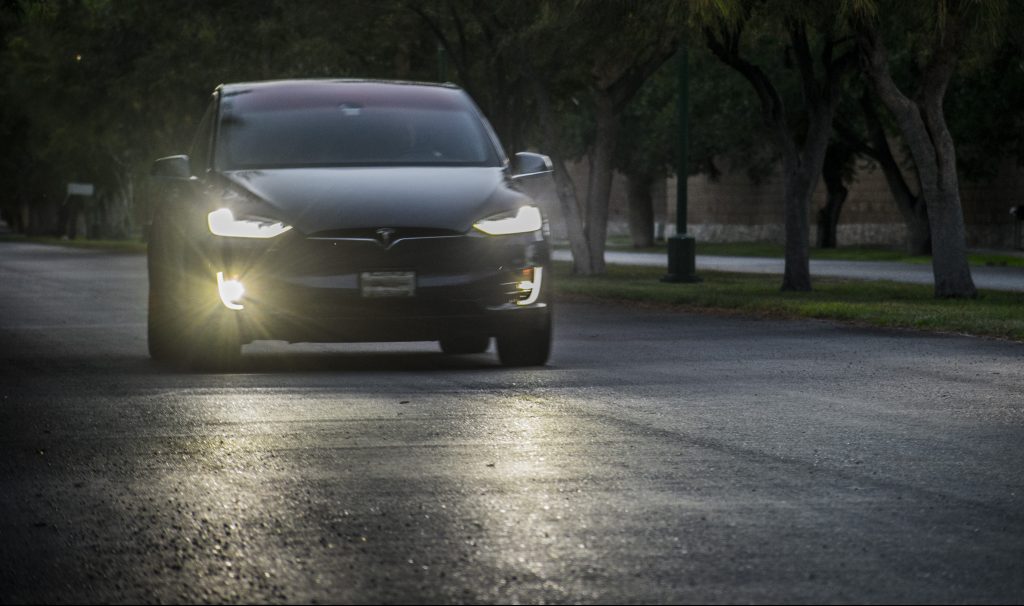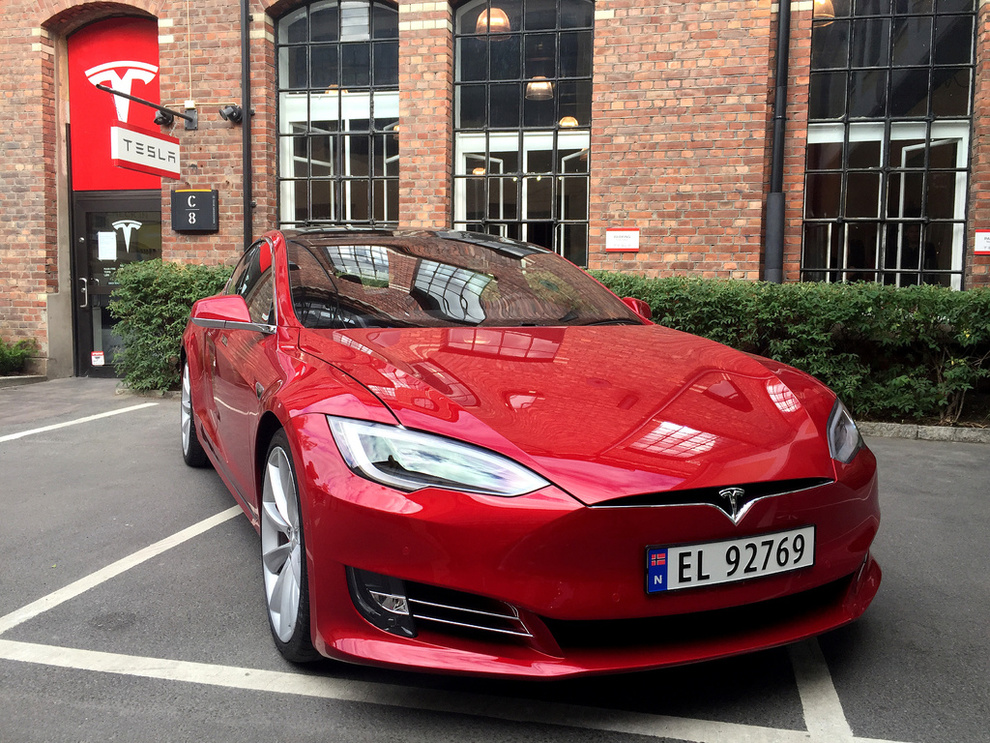

Investor's Corner
Tesla Model S, X softer sales in Europe are NOT due to the Audi e-tron and Jaguar I-PACE
In a note to clients on Wednesday, Bernstein senior technology analyst Toni Sacconaghi concluded that increased competition from vehicles such as the Audi e-tron and the Jaguar I-PACE is responsible for the recent weakness in Tesla’s sales volume in Europe. The analyst further warned that the arrival of other premium electric vehicles like the Mercedes-Benz EQC and the Porsche Taycan could worsen Tesla’s problem.
Explaining further, the Bernstein analyst added that the total market for Europe’s premium electric cars has only grown modestly in 2018 and 2019, and over this time, Tesla’s sales volume has decreased. “Our analysis suggests that the deteriorating sales trajectory of the Model S and X may be primarily due to competition, particularly in Europe, from Jaguar and Audi. In other words, the market isn’t growing much, and Tesla is losing share,” Sacconaghi wrote.
According to TSLA investor @Incentives101, an economist with a background in macro research, Bernstein’s conclusions are inaccurate. In a message to Teslarati, the economist provided a deep dive into the likely causes of the Model S and X’s sales decline in Europe, as well as the reasons why vehicles such as the Jaguar I-PACE and the Audi e-tron are in no way responsible for the reduced market share of Tesla’s flagship sedan and SUV.

Model S and X sales decline
It should be noted that Europe is a region, which means that it is comprised of multiple countries, each with a population of consumers that usually have different preferences in vehicle purchases. Looking at past vehicle sales data, the economist noted that from January-June 2018, Tesla sold 13,426 Model S and X in Europe, while in the first six months of 2019, the figure was 8,037.
“In those months of 2018, Norway and the Netherlands accounted for 52% of sales, while in 2019 it was just 28%. This means that 87% of the drop in sales of Model S and X in Europe is explained by the Norwegian and Dutch market. Furthermore, the Netherlands had Model S and X sales for the first six months of 2018 of 2,833 units and 167 for 2019. This means that the Netherlands by itself explains 50% of the drop in sales for Tesla’s flagship vehicles,” the investor wrote.

The Netherlands and Norway
If one were to look at the sales of the Audi e-tron and the Jaguar I-PACE in the Netherlands for the first half of 2019, one would find that the two vehicles only sold 362 and 111 units, respectively. This means that in the Netherlands, which was behind 50% of the drop in Tesla’s European sales, the e-tron and I-PACE couldn’t have been responsible since their combined sales are only 16% of the Model S and X’s 2018 sales for the same period. With this in mind, some headwinds were met by the Model S and X in the Netherlands, particularly in the form of a change in BIK incentives at the end of 2018, as well as the arrival of the more affordable Model 3, which has reached sales of over 6,000 units in the country.
As explained by the economist, Norway is a key market for Tesla in the European region, and it is responsible for 37% of the drop in Model S and X sales. For the first six months of 2019, Model S and X sales were 2,079 units, while the Audi e-tron sold 2,273 units and the Jaguar I-PACE sold 2,101. Bernstein’s note claimed that the market for premium electric vehicles didn’t increase, and thus, Tesla’s share of the European market just fell. This, according to the investor, is not correct. “If you take the previous Netherlands sales out of the equation — because it becomes incomparable — you’ll see that the market actually increased in Europe,” he wrote.

The actual reasons
The economist noted that there are a couple of factors that likely played a notable part in the decline of the Model S and X’s sales in Norway. First off, Tesla discontinued the 75 kWh (Standard Range) Model S and X, a variant that accounted for more than 80% of the sales in the country. More importantly, Tesla has entered the Norwegian market with the Model 3, a smaller, more affordable vehicle that boasts the best technologies that the electric car maker has to offer. “Norwegians have proven preferences for smaller and cheaper vehicles. Historically, the share of luxury vehicles in Norway is relatively low. It is then by no surprise that the Model 3 is currently selling at levels not seen in any other market, holding 14% of market share for total vehicles,” the economist explained.
In Norway’s case, at least, Tesla appears to have made a notable trade-off. It entered the market with the Model 3, which allowed the company to command 14% of the country’s total vehicle market. This came at a price in the form of a 50% decline in Model S and X sales. Of course, the removal of the Model S and X’s 75 kWh variant, as well as buyer expectations of an impending refresh of the two flagship vehicles, likely played a notable part in Norway’s sales decline as well.
Debunking Bernstein’s thesis
With these factors in mind, it appears that Bernstein’s findings are, for lack of a better term, inaccurate. The economist summed up his thesis as follows. “Two countries explain the drop in sales for the Model S and X almost entirely, and it’s absolutely clear that competition wasn’t the factor. Regulation and consumer preferences are. It is also important to mention that 28% of sales of the Audi e-tron were in Germany as well, a country where the Model S and X have never been strong, even at their peak.
“Consumers in the aggregate always behave rationally. There hasn’t been one example in history where a product(s) that is inferior in every way dominates the market or segment in which they compete. The Audi e-tron, the Jaguar I-PACE, and the Mercedes-Benz EQC are not even in the Model S and X segment specs-wise. Rather, they are closer in specs to the Model 3 and Model Y, both of which undercut them in price. The only reason people mistakenly put them against the Model S and X is their cost,” the investor explained.

Investor's Corner
Tesla gets price target bump, citing growing lead in self-driving

Tesla (NASDAQ: TSLA) stock received a price target update from Pierre Ferragu of Wall Street firm New Street Research, citing the company’s growing lead in self-driving and autonomy.
On Tuesday, Ferragu bumped his price target from $520 to $600, stating that the consensus from the Consumer Electronics Show in Las Vegas was that Tesla’s lead in autonomy has been sustained, is growing, and sits at a multiple-year lead over its competitors.
CES 2026 validates Tesla’s FSD strategy, but there’s a big lag for rivals: analyst
“The signal from Vegas is loud and clear,” the analyst writes. “The industry isn’t catching up to Tesla; it is actively validating Tesla’s strategy…just with a 12-year lag.”
The note shows that the company’s prowess in vehicle autonomy is being solidified by lagging competitors that claim to have the best method. The only problem is that Tesla’s Vision-based approach, which it adopted back in 2022 with the Model 3 and Model Y initially, has been proven to be more effective than competitors’ approach, which utilizes other technology, such as LiDAR and sensors.
Currently, Tesla shares are sitting at around $433, as the company’s stock price closed at $432.96 on Tuesday afternoon.
Ferragu’s consensus on Tesla shares echoes that of other Wall Street analysts who are bullish on the company’s stock and position within the AI, autonomy, and robotics sector.
Dan Ives of Wedbush wrote in a note in mid-December that he anticipates Tesla having a massive 2026, and could reach a $3 trillion valuation this year, especially with the “AI chapter” taking hold of the narrative at the company.
Ives also said that the big step in the right direction for Tesla will be initiating production of the Cybercab, as well as expanding on the Robotaxi program through the next 12 months:
“…as full-scale volume production begins with the autonomous and robotics roadmap…The company has started to test the all-important Cybercab in Austin over the past few weeks, which is an incremental step towards launching in 2026 with important volume production of Cybercabs starting in April/May, which remains the golden goose in unlocking TSLA’s AI valuation.”
Tesla analyst breaks down delivery report: ‘A step in the right direction’
Tesla has transitioned from an automaker to a full-fledged AI company, and its Robotaxi and Cybercab programs, fueled by the Full Self-Driving suite, are leading the charge moving forward. In 2026, there are major goals the company has outlined. The first is removing Safety Drivers from vehicles in Austin, Texas, one of the areas where it operates a ride-hailing service within the U.S.
Ultimately, Tesla will aim to launch a Level 5 autonomy suite to the public in the coming years.
Investor's Corner
Tesla Q4 delivery numbers are better than they initially look: analyst
The Deepwater Asset Management Managing Partner shared his thoughts in a post on his website.

Longtime Tesla analyst and Deepwater Asset Management Managing Partner Gene Munster has shared his insights on Tesla’s Q4 2025 deliveries. As per the analyst, Tesla’s numbers are actually better than they first appear.
Munster shared his thoughts in a post on his website.
Normalized December Deliveries
Munster noted that Tesla delivered 418k vehicles in the fourth quarter of 2025, slightly below Street expectations of 420k but above the whisper number of 415k. Tesla’s reported 16% year-over-year decline, compared to +7% in September, is largely distorted by the timing of the tax credit expiration, which pulled forward demand.
“Taking a step back, we believe September deliveries pulled forward approximately 55k units that would have otherwise occurred in December or March. For simplicity, we assume the entire pull-forward impacted the December quarter. Under this assumption, September growth would have been down ~5% absent the 55k pull-forward, a Deepwater estimate tied to the credit’s expiration.
“For December deliveries to have declined ~5% year over year would imply total deliveries of roughly 470k. Subtracting the 55k units pulled into September results in an implied December delivery figure of approximately 415k. The reported 418k suggests that, when normalizing for the tax credit timing, quarter-over-quarter growth has been consistently down ~5%. Importantly, this ~5% decline represents an improvement from the ~13% declines seen in both the March and June 2025 quarters.“
Tesla’s United States market share
Munster also estimated that Q4 as a whole might very well show a notable improvement in Tesla’s market share in the United States.
“Over the past couple of years, based on data from Cox Automotive, Tesla has been losing U.S. EV market share, declining to just under 50%. Based on data for October and November, Cox estimates that total U.S. EV sales were down approximately 35%, compared to Tesla’s just reported down 16% for the full quarter. For the first two months of the quarter, Cox reported Tesla market share of roughly a 65% share, up from under 50% in the September quarter.
“While this data excludes December, the quarter as a whole is likely to show a material improvement in Tesla’s U.S. EV market share.“
Elon Musk
Tesla analyst breaks down delivery report: ‘A step in the right direction’
“This will be viewed as better than feared deliveries and a step in the right direction for the Tesla story heading into 2026,” Ives wrote.

Tesla analyst Dan Ives of Wedbush released a new note on Friday morning just after the company released production and delivery figures for Q4 and the full year of 2025, stating that the numbers, while slightly underwhelming, are “better than feared” and as “a step in the right direction.”
Tesla reported production of 434,358 and deliveries of 418,227 for the fourth quarter, while 1,654,667 vehicles were produced and 1,636,129 cars were delivered for the full year.
Tesla releases Q4 and FY 2025 vehicle delivery and production report
Interestingly, the company posted its own consensus figures that were compiled from various firms on its website a few days ago, where expectations were set at 1,640,752 cars for the year. Tesla fell about 4,000 units short of that. One of the areas where Tesla excelled was energy deployments, which totaled 46.7 GWh for the year.
🚨 Wedbush’s Dan Ives has released a new note on Tesla $TSLA:
“Tesla announced its FY4Q25 delivery numbers this morning coming in at 418.2k vehicles slightly below the company’s consensus delivery estimate of 422.9k but much better than the whisper numbers of ~410k as the…
— TESLARATI (@Teslarati) January 2, 2026
In terms of vehicle deliveries, Ives writes that Tesla certainly has some things to work through if it wants to return to growth in that aspect, especially with the loss of the $7,500 tax credit in the U.S. and “continuous headwinds” for the company in Europe.
However, Ives also believes that, given the delivery numbers, which were on par with expectations, Tesla is positioned well for a strong 2026, especially with its AI focus, Robotaxi and Cybercab development, and energy:
“This will be viewed as better than feared deliveries and a step in the right direction for the Tesla story heading into 2026. We look forward to hearing more at the company’s 4Q25 call on January 28th. AI Valuation – The Focus Throughout 2026. We believe Tesla could reach a $2 trillion market cap over the coming year and, in a bull case scenario, $3 trillion by the end of 2026…as full-scale volume production begins with the autonomous and robotics roadmap…The company has started to test the all-important Cybercab in Austin over the past few weeks, which is an incremental step towards launching in 2026 with important volume production of Cybercabs starting in April/May, which remains the golden goose in unlocking TSLA’s AI valuation.”
It’s no secret that for the past several years, Tesla’s vehicle delivery numbers have been the main focus of investors and analysts have looked at them as an indicator of company health to a certain extent. The problem with that narrative in 2025 and 2026 is that Tesla is now focusing more on the deployment of Full Self-Driving, its Optimus project, AI development, and Cybercab.
While vehicle deliveries still hold importance, it is more crucial to note that Tesla’s overall environment as a business relies on much more than just how many cars are purchased. That metric, to a certain extent, is fading in importance in the grand scheme of things, but it will never totally disappear.
Ives and Wedbush maintained their $600 price target and an ‘Outperform’ rating on the stock.








